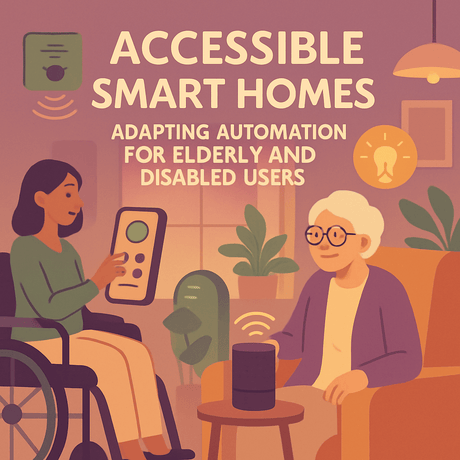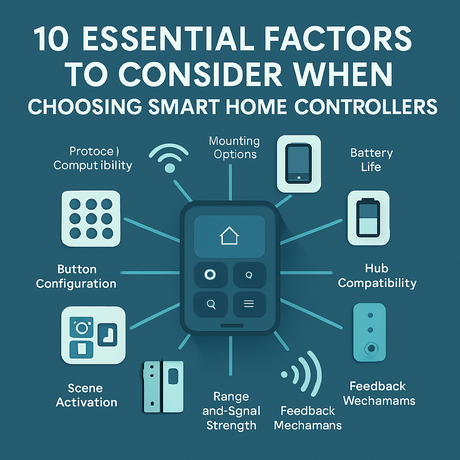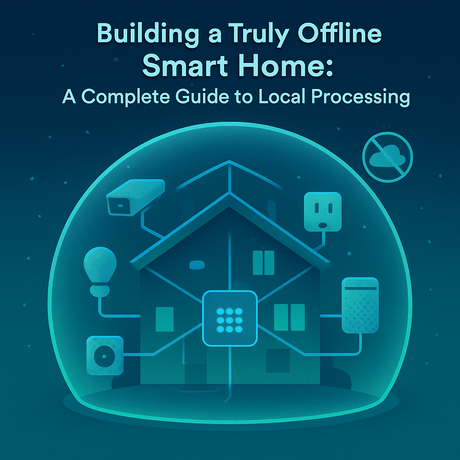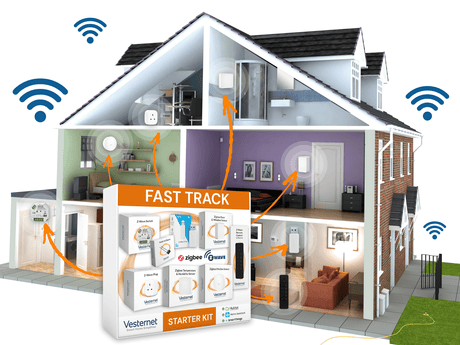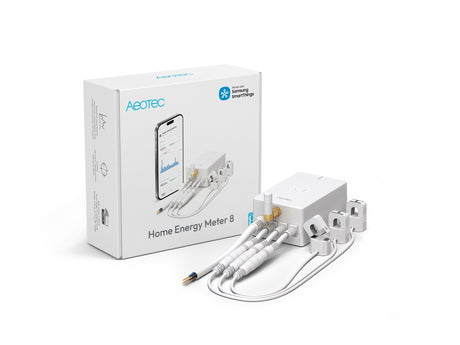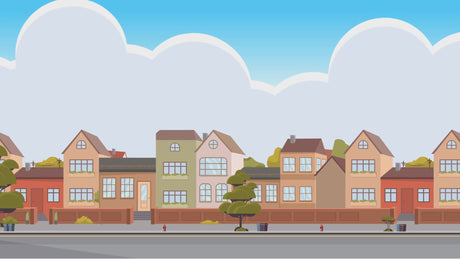Door sensors are the unsung heroes of any smart home security system. These small devices play a crucial role in monitoring entry points, triggering automations, and keeping your home secure. But with so many options available, how do you choose the right door sensors for your specific needs?
In this guide, we'll explore the key factors to consider when selecting door sensors, helping you make an informed decision that enhances your smart home's functionality and security.

1. Protocol Compatibility
The wireless protocol your door sensor uses determines which smart home systems it can communicate with. Z-Wave and Zigbee are the two leading protocols for reliable, low-power mesh networking.
Z-Wave sensors operate on a dedicated frequency band (868.42 MHz in Europe), reducing interference from Wi-Fi networks and other household devices. This protocol offers excellent range and reliability, with each device acting as a repeater to strengthen the network.
Zigbee sensors provide similar mesh networking capabilities with faster response times and lower power consumption, making them ideal for battery-operated devices. They're particularly well-suited for homes with many smart devices.
When selecting door sensors, ensure they match your existing smart home hub's protocol or choose sensors that will work with the hub you plan to purchase.
2. Installation and Design
Door sensors come in various shapes and sizes, and the right choice depends on your installation requirements and aesthetic preferences.
Traditional two-piece sensors consist of a sensor unit and a magnet that mount on the door frame and door. When separated, they trigger an alert. These are versatile but more visible.
Ultra-thin sensors offer a more discreet profile, making them nearly invisible when installed on door frames. Some models, like strip sensors, can be completely hidden within the door frame for a seamless look.
Consider the visual impact of the sensors in your home and choose designs that blend with your décor while providing the functionality you need.
3. Battery Life and Power Management
Most door sensors are battery-powered, making battery life a crucial consideration for long-term reliability and maintenance.
Standard door sensors typically offer 1-2 years of battery life with regular usage. However, premium models can extend this to 5-10 years through advanced power management.
When evaluating battery life, consider factors like reporting frequency, environmental conditions, and signal strength requirements. Sensors that need to transmit over longer distances or report status more frequently will consume more power.
Look for sensors with low-battery notifications to ensure you're alerted before they stop functioning.

4. Additional Sensing Capabilities
Modern door sensors often include additional sensing capabilities beyond basic open/close detection.
Temperature sensors can help monitor climate conditions in different rooms, contributing to more efficient heating & cooling.
Vibration or tilt detection can alert you to attempts to force a door or window open, even if it's not fully opened.
Light sensors can detect when a door is opened in dark conditions, potentially indicating unauthorized access.
These additional capabilities can enhance your smart home's functionality and provide more comprehensive monitoring.
5. Range and Signal Strength
The effective range between your door sensors and hub is critical for reliable operation, especially in larger homes.
Z-Wave Plus and Zigbee sensors typically offer ranges of 30-100 meters in open spaces, but walls and other obstacles can significantly reduce this range.
Consider the layout of your home and the location of your hub when selecting sensors. For larger homes or installations with many obstacles, choose sensors with stronger transmission capabilities or ensure you have enough repeater devices to extend the network.
6. Smart Home Integration
The value of door sensors increases dramatically when they integrate seamlessly with your broader smart home ecosystem.
Look for sensors that work with popular platforms like SmartThings, Home Assistant, or Apple HomeKit if those are part of your setup.
Consider how the sensors will trigger automations—for example, turning on lights when you enter a room, adjusting the thermostat when windows are opened, or sending alerts when doors are accessed at unusual times.
The best door sensors offer flexible integration options that enhance your existing smart home capabilities.
7. Security Features
For sensors that play a role in home security, additional security features are worth considering.
Tamper detection alerts you if someone attempts to remove or disable the sensor, adding an extra layer of security.
Encrypted communications prevent potential hackers from intercepting signals between your sensors and hub.
For security-critical applications, look for sensors with these advanced features to ensure your system remains secure and reliable.
8. Environmental Durability
Door sensors may need to withstand various environmental conditions depending on their location.
Indoor sensors generally require standard durability, but sensors installed on exterior doors or in humid environments like bathrooms need enhanced protection.
Water-resistant or waterproof sensors are essential for outdoor installations or areas exposed to moisture.
Temperature tolerance is important for sensors installed in unheated spaces or outdoor locations that experience extreme temperatures.
Match the sensor's environmental ratings to its intended installation location to ensure reliable long-term performance.

9. Setup and Configuration
The ease of adding sensors to your smart home system can significantly impact your overall experience.
Some sensors offer "auto-include" functionality for simple, tool-free setup, while others may require more complex configuration steps.
Consider whether the sensors require a specific hub or can work with standard Z-Wave or Zigbee controllers.
User-friendly setup processes and clear documentation can make a big difference, especially if you're installing multiple sensors throughout your home.
10. Price and Value
Door sensors range from budget-friendly basic models to premium options with advanced features.
Basic sensors typically cost £20-30 and provide reliable open/close detection with standard battery life.
Mid-range sensors (£30-45) often include additional sensing capabilities and improved battery performance.
Premium sensors (£45-65) offer the longest battery life, smallest form factors, or specialized features like tamper detection and environmental monitoring.
Consider the total cost of ownership, including potential battery replacements and any required hubs or controllers, when evaluating the value proposition of different sensors.
Recommended Door Sensors for Different Needs
Based on the factors above, here are our recommendations for different user requirements:
For Discreet Installation: The Vesternet Zigbee Door Sensor offers an ultra-slim profile that blends seamlessly with door frames while providing reliable performance and excellent battery life.
For Maximum Battery Life: The Z-Wave Plus Sensative Strips Guard 800 stands out with up to 10 years of battery life, making it ideal for hard-to-reach installation locations.
For Advanced Features: The Z-Wave Fibaro Universal Door & Window Sensor 2 combines open/close detection with temperature sensing and tamper protection in a sleek, customizable design.
For Multi-Function Capability: The Zigbee Aeotec SmartThings Multipurpose Sensor offers door/window monitoring plus vibration detection and temperature sensing in a compact package.
For Professional-Grade Monitoring: The Z-Wave Plus Aeotec Door/Window Sensor 7 Pro provides enhanced reliability with its replaceable circuit board and ability to connect additional binary sensors.
For Budget-Conscious Users: The Aqara Door and Window Sensor T1 delivers solid performance at an attractive price point with good smart home platform compatibility.
For Specialized Applications: The Nice Door/Window Control combines compact size with versatile functionality, making it suitable for a wide range of installation scenarios.
By carefully considering these factors and matching them to your specific requirements, you can select door sensors that enhance your smart home's security, convenience, and automation capabilities. The right sensors will seamlessly integrate into your daily life while providing the peace of mind that comes from knowing your home's entry points are being monitored effectively.



